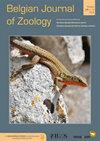Genetic diversity and population structure of the African catfish, Clarias gariepinus (Burchell, 1822) in Kenya: implication for conservation and aquaculture – Corrigendum
IF 1.1
4区 生物学
Q2 ZOOLOGY
引用次数: 3
Abstract
African catfish, Clarias gariepinus , is an important species in aquaculture and fisheries in Kenya. Mitochondrial D-loop control region was used to determine genetic variation and population structure in samples of C. gariepinus from 10 sites including five natural populations (Lakes Victoria (LVG), Kanyaboli (LKG), Turkana (LTA), Baringo (LBA) and Jipe (LJP), and five farms (Sangoro Aquaculture Center (SAN), Sagana Aquaculture Centre (SAG), University of Eldoret Fish Farm (UoE), Kibos Fish Farm (KIB), and Wakhungu Fish Farm (WKU)) in Kenya. Similarly, samples from eight localities (four natural populations: LVG/LKG, LTA, LBA, and four farmed: SAN, SAG, KIB, UoE) were genotyped using six microsatellite DNA loci. For the D-loop control region, samples from natural sites exhibited higher numbers of haplotypes and haplotype diversities compared to farmed samples, and 88.2% of haplotypes were private. All except LJP and LTA shared haplotypes, and the highest number of shared haplotypes (8) was detected in KIB. The 68 haplotypes we found in 268 individuals grouped into five phylogenetic clades: LVG/LKG, LTA, LBA, LJP and SAG. Haplotypes of farmed C. gariepinus mostly have haplotypes typical of LVG/LKG, and some shared haplotypes of the LBA population. Microsatellite analysis showed farmed samples have higher numbers of alleles than natural samples, but higher observed and expected heterozygosity levels were found in samples of natural populations. Fifteen pair-wise comparisons had significantly different FST values. All samples were in Hardy-Weinberg equilibrium. Samples from the eight localities grouped into four genetic clusters (LVG/LKG, LTA, LBA and SAG), indicating genetically distinct populations, which should be considered for aquaculture and conservation.肯尼亚非洲鲶鱼Clarias gariepinus(Burchell,1822)的遗传多样性和种群结构:对保护和水产养殖的影响——勘误表
非洲鲶鱼是肯尼亚水产养殖和渔业的重要物种。使用线粒体D环控制区测定了来自10个地点的加里埃皮努斯C.gariepinus样本的遗传变异和种群结构,这些地点包括5个自然种群(维多利亚湖(LVG)、Kanyaboli(LKG)、Turkana(LTA)、Baringo(LBA)和Jipe(LJP),以及5个养殖场(Sangoro水产养殖中心(SAN)、Sagana水产养殖中心,Kibos渔场(KIB)和Wakhungu渔场(WKU))。同样,使用六个微卫星DNA位点对来自八个地区(四个自然种群:LVG/LKG、LTA、LBA和四个养殖种群:SAN、SAG、KIB、UoE)的样本进行基因分型。对于D环对照区,与养殖样本相比,来自自然地点的样本表现出更高数量的单倍型和单倍型多样性,88.2%的单倍类型是私人的。除LJP和LTA外,所有人都有相同的单倍型,并且在KIB中检测到最高数量的共享单倍型(8)。我们在268个个体中发现的68个单倍型分为五个系统发育分支:LVG/LKG、LTA、LBA、LJP和SAG。养殖C.gariepinus的单倍型大多具有LVG/LKG的典型单倍型,以及LBA群体的一些共享单倍型。微卫星分析显示,养殖样本的等位基因数量高于自然样本,但在自然种群样本中发现了更高的观察和预期杂合水平。15个配对比较具有显著不同的FST值。所有样品均处于Hardy-Weinberg平衡。来自八个地区的样本分为四个基因簇(LVG/LKG、LTA、LBA和SAG),表明遗传上不同的种群,应考虑进行水产养殖和保护。
本文章由计算机程序翻译,如有差异,请以英文原文为准。
求助全文
约1分钟内获得全文
求助全文
来源期刊

Belgian Journal of Zoology
生物-动物学
CiteScore
1.90
自引率
0.00%
发文量
10
审稿时长
>12 weeks
期刊介绍:
The Belgian Journal of Zoology is an open access journal publishing high-quality research papers in English that are original, of broad interest and hypothesis-driven. Manuscripts on all aspects of zoology are considered, including anatomy, behaviour, developmental biology, ecology, evolution, genetics, genomics and physiology. Manuscripts on veterinary topics are outside of the journal’s scope. The Belgian Journal of Zoology also welcomes reviews, especially from complex or poorly understood research fields in zoology. The Belgian Journal of Zoology does no longer publish purely taxonomic papers. Surveys and reports on novel or invasive animal species for Belgium are considered only if sufficient new biological or biogeographic information is included.
 求助内容:
求助内容: 应助结果提醒方式:
应助结果提醒方式:


